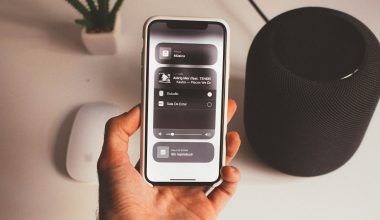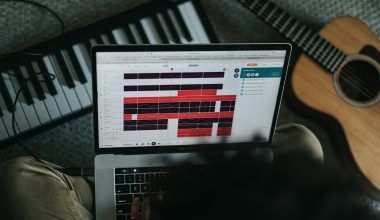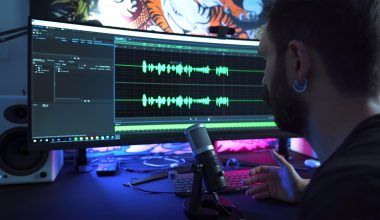If you’ve ever watched someone play a beautiful song by just looking at some strange symbols on paper and thought, “Wow, how do they do that?”—you’re in the right place! Learning how to read sheet music can seem a bit scary at first, but it’s actually very simple once you break it down. Think of it like learning a new language, but one that helps you make music.
Sheet music is like a map for musicians. It tells them what to play, how fast or slow to play it, and even how loudly or softly to perform. This guide will help you learn to read sheet music step by step, even if you’re a complete beginner.
What is Sheet Music?
Sheet music is a way of writing down music so that others can play it. It uses a combination of lines, symbols, and notes to show what the song sounds like. Each note and symbol tells you what to do—play higher, lower, faster, slower, and so on.
Think of it as a musical recipe. Just like a recipe tells you how to bake a cake, sheet music tells you how to create a song.
Let’s Start with the Basics
Before we jump into the details, let’s break it down into easy pieces.
The Staff
The staff is where everything happens. It’s made up of five horizontal lines and four spaces. Each line and space represents a different musical note. You’ll always read the notes from left to right, just like reading a book.
The Clefs
At the very beginning of the staff, you’ll see a symbol called a clef. The clef tells you which notes are on which lines and spaces.
- Treble Clef: Looks like a fancy “G” and is used for high-pitched instruments like the violin, flute, or your right hand on the piano.
- Bass Clef: Looks like a backward “C” with two dots and is used for low-pitched instruments like the cello or your left hand on the piano.
What Are Notes?
Notes are the heart of sheet music. They tell you which sound to play and how long to play it. Let’s take a closer look:
- Whole Note: This note looks like an empty circle. It lasts for four beats. Imagine saying “One, two, three, four”—that’s how long you hold it.
- Half Note: Looks like a circle with a stem. It lasts for two beats.
- Quarter Note: A solid black circle with a stem. It’s the most common note and lasts for one beat.
- Eighth Note: Looks like a quarter note but with a flag. It lasts for half a beat.
Each note has a specific place on the staff, which tells you whether to play a high-pitched or low-pitched sound.
Rhythm and Time Signatures: Keeping the Beat
You’ve probably clapped along to a song before. That’s rhythm! Sheet music uses something called a time signature to tell you how to keep the beat.
Time Signature
The time signature is written as two numbers, like 4/4 or 3/4. It tells you how many beats are in each measure (a section of the staff).
- 4/4 Time: This is called “common time” because it’s used in so many songs. It means there are four beats in each measure.
- 3/4 Time: Think of a waltz—1-2-3, 1-2-3. This time signature has three beats per measure.
Learning the Notes on the Staff
The lines and spaces on the staff each represent a different note. Here’s an easy way to remember them:
For the Treble Clef (Right Hand):
- Lines: Every Good Boy Deserves Fudge (E, G, B, D, F)
- Spaces: They spell the word FACE (F, A, C, E)
For the Bass Clef (Left Hand):
- Lines: Good Boys Deserve Fudge Always (G, B, D, F, A)
- Spaces: All Cows Eat Grass (A, C, E, G)
With these tricks, you’ll memorize the notes in no time!
What Are Key Signatures?
At the beginning of the staff, next to the clef, you might see some sharp (#) or flat (b) symbols. These are part of the key signature. They tell you which notes are sharp (play a bit higher) or flat (play a bit lower) throughout the piece.
For example:
- A key with one sharp is the G Major key.
- A key with no sharps or flats is C Major, the easiest key for beginners.
Dynamics: Play Loud or Soft
Music isn’t just about playing the right notes—it’s about playing with feeling! Dynamics tell you how loud or soft to play:
- p (piano): Play softly.
- f (forte): Play loudly.
- mf (mezzo forte): Play moderately loud.
Dynamics make the music more emotional and exciting.
Practice Makes Perfect
Learning how to read sheet music takes practice. Here are some tips to help you get started:
Start with Simple Songs
Begin with easy, familiar tunes. Think “Twinkle, Twinkle, Little Star” or “Mary Had a Little Lamb.”
Use a Pencil
When you’re practicing, use a pencil to mark tricky sections. You can erase it later when you’ve mastered the piece.
Clap the Rhythm
Before you play, try clapping the rhythm of the notes. This will help you understand the timing.
Practice Every Day
Even 10–15 minutes a day will help you improve faster than long practice sessions once a week.
Helpful Tools for Learning
Here are some tools that can make learning sheet music easier and more fun:
- Music Apps: Apps like Simply Piano or MuseScore offer interactive lessons.
- Flashcards: These can help you memorize notes and symbols.
- Online Videos: Check out tutorials on YouTube for step-by-step guidance.
Common Challenges and How to Overcome Them
Struggling to Read Notes Quickly
It’s okay! Speed will come with time. Practice sight-reading daily by playing new pieces.
Mixing Up Lines and Spaces
Remember the mnemonics (like FACE for treble clef spaces). Repeat them out loud until they stick.
Keeping Up with Rhythm
Start by playing slowly. Use a metronome to keep a steady beat.
The Joy of Reading Sheet Music
Once you learn how to read sheet music, a whole new world opens up. You can play songs you love, join bands, or even write your own music! It’s like unlocking a secret language that connects musicians across the globe.
Conclusion: You’ve Got This!
Learning how to read sheet music may seem tricky at first, but with practice and patience, it will become second nature. Start small, celebrate your progress, and remember to have fun along the way. Music is meant to be enjoyed, and sheet music is your key to endless melodies.
Related Articles:
For further reading, explore these related articles:
- EDM Producers to Follow: Discover the Artists Shaping the Future of Music
- The Best Metal Bands That Shaped the World of Heavy Music
For additional resources on music marketing and distribution, visit DMT RECORDS PRIVATE LIMITED.






